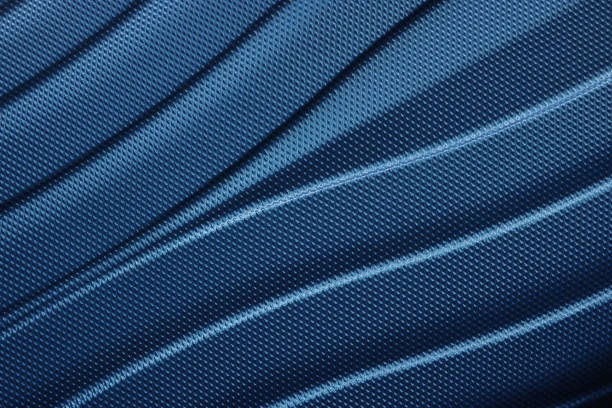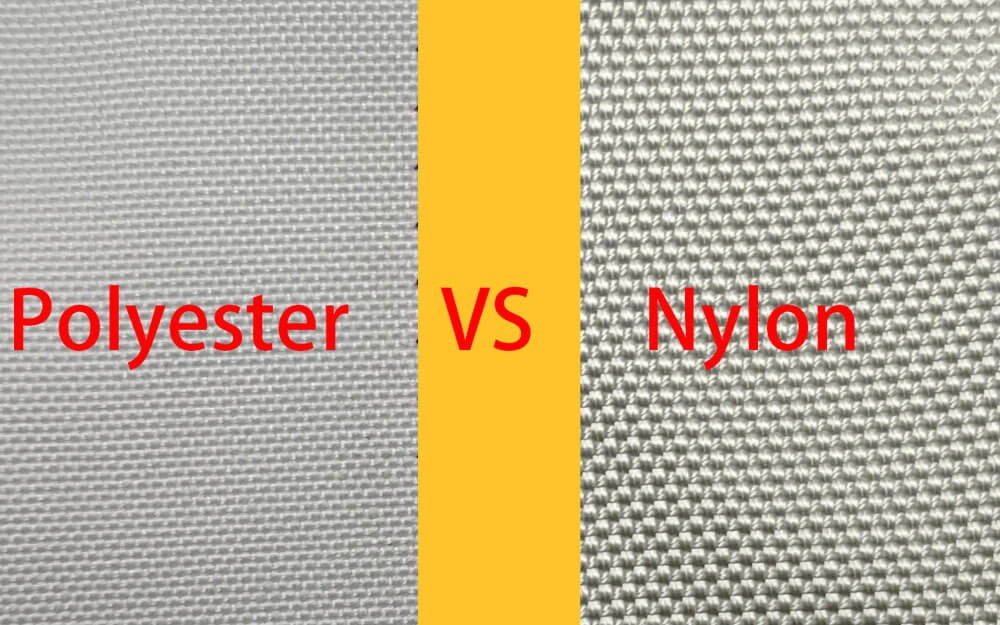When you are choosing running jackets or outdoor hiking bags in a sporting goods store, you will often encounter two types of fabrics: nylon and polyester. They are both popular synthetic fibers, but their properties are significantly different, which directly affects the user experience.
By comprehensively comparing the physical properties, applicable scenarios, care methods and environmental impacts of nylon and polyester, and analyzing their differences, we can help you accurately match your needs when purchasing sportswear, outdoor equipment, and home textiles, so that every piece of clothing or equipment can be used to its full potential and perform at its best.
What is Nylon Fabric?

Nylon is a synthetic polyamide fiber developed in 1935 by chemist Wallace Carothers, originally designed as a substitute for silk. Derived from petroleum-based chemicals, it revolutionized textiles with its unique combination of strength and versatility. As a pioneering synthetic material, nylon is renowned for its high tensile strength, elasticity, and durability, making it a staple in both fashion and industrial applications.
Key Properties
- Exceptional Strength & Abrasion Resistance: Nylon fibers are 2–3 times stronger than cotton, resisting tears and wear even under heavy use. This makes it ideal for rugged outdoor gear like hiking backpacks and parachutes.
- Elasticity & Recovery: Capable of stretching 30–80% of its original length and bouncing back effortlessly, nylon is the go-to for activewear such as yoga pants and sports bras, ensuring a snug, form-fitting comfort.
- Smooth Texture & Drapability: Its sleek surface mimics silk, offering a soft handfeel and elegant drape in garments like dresses and blouses, blending style with comfort.
- Water Resistance & Quick-Drying: Nylon’s hydrophobic nature repels moisture, making it perfect for raincoats, swimwear, and outdoor apparel. It dries much faster than natural fibers, reducing discomfort in wet conditions.
Common Applications
- Apparel:
- Activewear: Running jackets (windproof), compression leggings (supportive stretch), and swimsuits (chlorine-resistant).
- Fashion: Lightweight puffer coats, silky blouses, and sheer stockings for their smooth texture.
- Outdoor & Travel:
- Backpacks, tents, and luggage, valued for their tear-resistant durability and lightweight design.
- Industrial & Home:
- Automotive seatbelts, ropes, and carpets where resistance to friction and stains is essential.
From high-performance sportswear to durable outdoor equipment, nylon’s adaptability has solidified its status as a cornerstone of modern textiles.
What is Polyester Fabric?

Polyester is a synthetic fiber made from polyester polymers, typically derived from petroleum-based chemicals like ethylene glycol and terephthalic acid. First commercialized in the 1950s, it has become the world’s most widely produced textile fiber due to its affordability, durability, and versatility. As a workhorse of the fashion and industrial sectors, polyester is valued for its practicality and adaptability to various applications.
Key Properties
- Durability & Wrinkle Resistance: Polyester fibers are highly stable, resisting stretching, shrinking, and wrinkling. This makes it ideal for low-maintenance clothing like business shirts and suits, as well as upholstery that withstands daily use.
- Hydrophobic & Quick-Drying: With a water absorption rate of just 0.4%, polyester repels moisture and dries rapidly, making it popular for activewear (e.g., moisture-wicking running shirts) and outdoor gear (e.g., waterproof jackets).
- Colorfastness & Easy Care: Polyester holds dyes exceptionally well, retaining vibrant colors through repeated washes. It is also resistant to chemicals and can be machine-washed or dried without significant fading or damage, appealing to busy lifestyles.
- Cost-Effective: Thanks to its efficient production process and abundant raw materials, polyester is generally more affordable than natural fibers like cotton or wool, as well as some synthetics like nylon.
Common Applications
- Apparel:
- Everyday Wear: Casual dresses, trousers, and blouses for their wrinkle-free convenience.
- Performance Gear: Cycling jerseys (breathable and quick-drying), ski jackets (insulating and water-resistant).
- Home Textiles:
- Curtains, bed sheets, and sofa covers, valued for their stain resistance and durability.
- Synthetic down fillings for pillows and quilts, offering lightweight warmth at low cost.
- Industrial & Technical Uses:
- Automotive parts (seat covers, tire reinforcement), packaging materials (straps and films), and even 3D printing filaments.
While polyester lacks the breathability of natural fibers, advancements like recycled polyester (rPET) and breathable microfiber variants have expanded its appeal. Its ability to blend with other materials (e.g., cotton for comfort, spandex for stretch) further solidifies its role as a go-to fabric for practical, cost-effective solutions across industries.
Nylon vs Polyester Fabric

Nylon and polyester are two of the most widely used synthetic fibers, each offering distinct advantages that cater to different needs. Below is a detailed comparison of their key properties and applications.
Durability and Strength
Nylon is renowned for its superior tensile strength and abrasion resistance, thanks to its tightly bonded polyamide molecular structure. It can withstand heavy loads and repeated friction, making it ideal for industrial uses like conveyor belts and climbing gear. For example, a nylon (climbing rope) can support significantly more weight than a polyester alternative. While polyester is durable, its strength is generally lower than nylon’s, especially in high-stress scenarios. However, polyester’s stability makes it suitable for everyday items like backpacks and furniture upholstery.
Water Resistance
Both fibers are hydrophobic, but polyester often outperforms nylon in water resistance due to its smoother surface and lower moisture absorption. This makes polyester a top choice for raincoats and outdoor tents. That said, nylon can be engineered for superior waterproofing with coatings like DWR (durable water repellent), commonly seen in high-end hiking jackets. Polyester’s coating tends to be more long-lasting, while nylon’s coating may require reapplication over time.
Handfeel and Texture
Nylon boasts a silky-smooth texture that feels luxurious against the skin, making it popular for lingerie, swimwear, and athletic apparel. Its softness and drapability also suit elegant dresses and blouses. Polyester, however, offers more texture variability—from crisp, structured weaves to microfiber imitations of suede or fleece. While versatile, polyester is less breathable and may trap heat, leading to discomfort in warm climates.
Elasticity and Stretch
Nylon’s elasticity is unparalleled—it can stretch up to 80% of its original length and snap back without permanent deformation. This makes it essential for activewear like yoga pants and compression sleeves, where flexibility and recovery are critical. Polyester has minimal stretch (20–30% at most) and is more prone to sagging after repeated use. It’s often blended with spandex for garments requiring mild stretch, such as casual trousers.
Wrinkle Resistance
Polyester excels in wrinkle resistance, maintaining a crisp appearance even after washing or prolonged sitting. This makes it a staple in business attire and travel-friendly clothing. Nylon is moderately wrinkle-resistant but may retain minor creases, especially when wet. For example, a nylon windbreaker may need light ironing, while a polyester shirt can be worn straight from the dryer.
Dyeability and Colorfastness
Both fibers hold dyes well, but nylon absorbs colors more vividly, producing rich, saturated hues in fashion items like vibrant activewear. Polyester’s colorfastness is exceptional, resisting fading from sunlight and frequent washing, which benefits outdoor products like patio furniture and camping gear. However, dark nylon garments may show slight color loss after heavy abrasion, while polyester remains steadfast.
Conclusion
Choosing between nylon and polyester hinges on your priorities:
- Opt for nylon when durability, elasticity, and softness are key (e.g., activewear, outdoor gear).
- Choose polyester for affordability, wrinkle resistance, and low maintenance (e.g., casual wear, home textiles).
Both fibers continue to evolve, with innovations in sustainability and performance ensuring they remain integral to modern textiles. By understanding their strengths, you can make informed decisions that balance functionality, cost, and environmental responsibility. Contact us for more information on fabrics.
